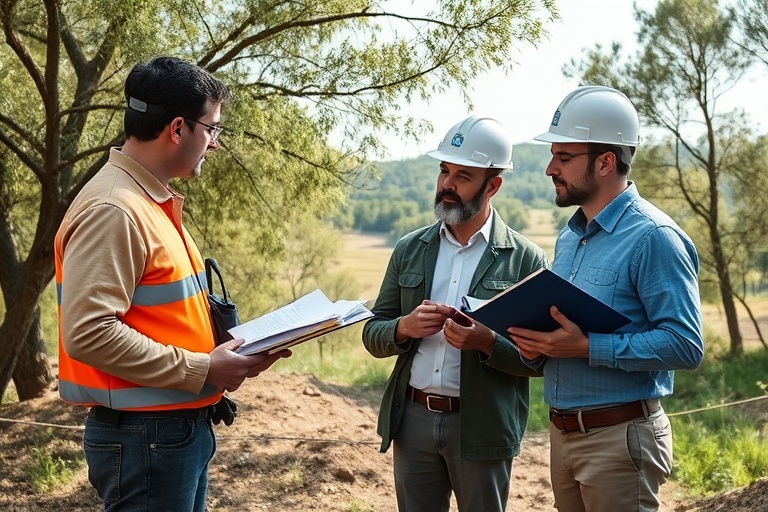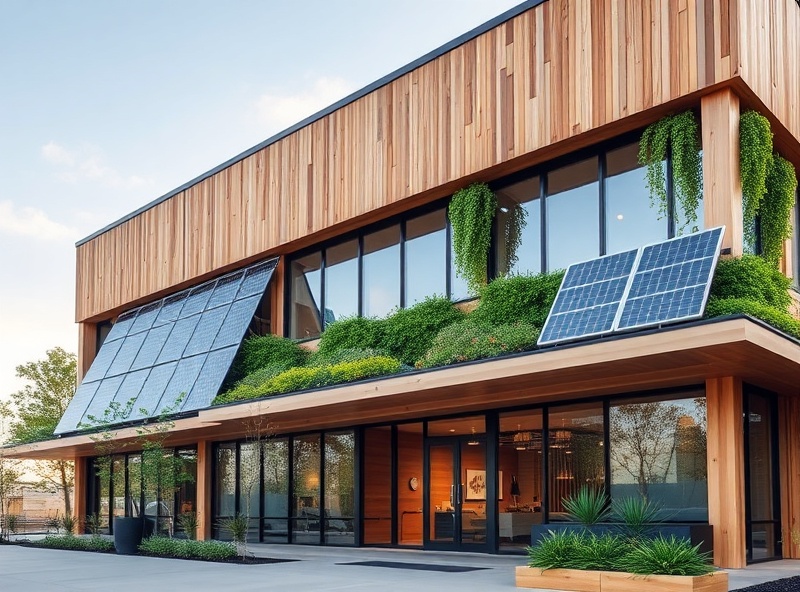Our Design
Methodology
A comprehensive approach to sustainable architecture that integrates environmental stewardship, innovative technology, and human-centered design principles
Core
Principles
Six fundamental principles that guide every aspect of our design process, ensuring buildings that are not just sustainable, but regenerative for both people and planet
Biomimetic Design
Learning from nature's 3.8 billion years of R&D to create efficient, resilient building systems that work in harmony with natural processes.
Circular Economy
Designing buildings as material banks where every component can be disassembled, reused, or recycled at end of life.
Passive House Standards
Ultra-low energy buildings that maintain comfortable conditions year-round with minimal heating and cooling needs.
Biophilic Integration
Incorporating natural elements, patterns, and processes to enhance human wellbeing and connection to nature.
Climate Adaptation
Future-proofing buildings against climate change impacts through resilient design and adaptive strategies.
Social Impact
Creating spaces that foster community, equity, and cultural expression while addressing local needs and priorities.
Design
Process
A structured five-phase approach that ensures thorough analysis, creative exploration, and precise execution of sustainable design solutions

Discovery & Research
2-4 weeks
Comprehensive site analysis, stakeholder interviews, and environmental assessment to understand context and constraints.
Key Activities:
- Site surveys and soil analysis
- Climate data collection
- Community engagement sessions
- Regulatory framework review
Deliverables:
Site Analysis Report, Stakeholder Requirements, Sustainability Goals
Concept Development
3-6 weeks
Iterative design exploration focused on passive strategies, material selection, and integration with natural systems.
Key Activities:
- Bioclimatic design strategies
- Material lifecycle assessment
- Energy modeling simulations
- Stakeholder design workshops
Deliverables:
Concept Drawings, Performance Targets, Material Strategy
Design Development
4-8 weeks
Detailed design refinement using advanced simulation tools to optimize performance and validate sustainability metrics.
Key Activities:
- Advanced energy modeling
- Structural optimization
- Systems integration design
- Cost-benefit analysis
Deliverables:
Technical Drawings, Performance Analysis, Cost Estimates
Documentation & Permits
2-4 weeks
Comprehensive construction documentation and regulatory approval process with emphasis on green building certifications.
Key Activities:
- Construction drawings
- Permit applications
- Green certification submissions
- Contractor selection support
Deliverables:
Construction Documents, Permits, Certification Applications
Construction Support
Ongoing
Active construction administration ensuring design intent is maintained and sustainability goals are achieved.
Key Activities:
- Regular site inspections
- Material verification
- Quality assurance testing
- Performance commissioning
Deliverables:
Site Reports, Quality Documentation, Performance Verification
Certifications & Standards
We design to the highest environmental standards and pursue third-party certifications that validate our commitment to sustainability and performance
LEED
PlatinumLeadership in Energy and Environmental Design
BREEAM
OutstandingBuilding Research Establishment Environmental Assessment Method
Passive House
CertifiedUltra-low energy building standard
Living Building
ChallengeRegenerative design framework
WELL
GoldHealth and wellness in buildings
ENERGY STAR
Most EfficientEnergy efficiency certification
Case
Study
A detailed look at how our methodology delivered exceptional results in a complex commercial project
Net-Zero Office Complex
A flagship project demonstrating our integrated approach to sustainable design, achieving net-zero energy consumption through passive strategies and renewable systems.

The Challenge
Create a high-performance office building that produces as much energy as it consumes while providing a healthy, productive work environment for 200+ employees.
Our Solution
Integrated design approach combining passive house principles, advanced building systems, and renewable energy generation with extensive post-occupancy monitoring.
Performance Results
Energy Use Intensity
65% below baseline
Daylight Autonomy
Target: 75%
Indoor Air Quality
WELL Gold Standard
Embodied Carbon
vs conventional construction
Our
Impact
Measurable results from our commitment to sustainable design excellence, demonstrating the real-world impact of our methodology
Energy Performance
Average EUI Reduction
compared to conventional buildings
Renewable Energy Integration
of projects include on-site generation
Net-Zero Certifications
buildings achieved to date
Environmental Impact
Embodied Carbon Reduction
through material optimization
Water Use Reduction
via efficient fixtures and rainwater harvesting
Waste Diversion Rate
during construction phase
Health & Wellness
Indoor Air Quality
of projects meet WELL standards
Natural Daylight
average daylight autonomy achieved
Productivity Improvement
reported by occupants
Certification Success Rate
Our track record of achieving the highest levels of third-party certification across our portfolio of 15 completed projects